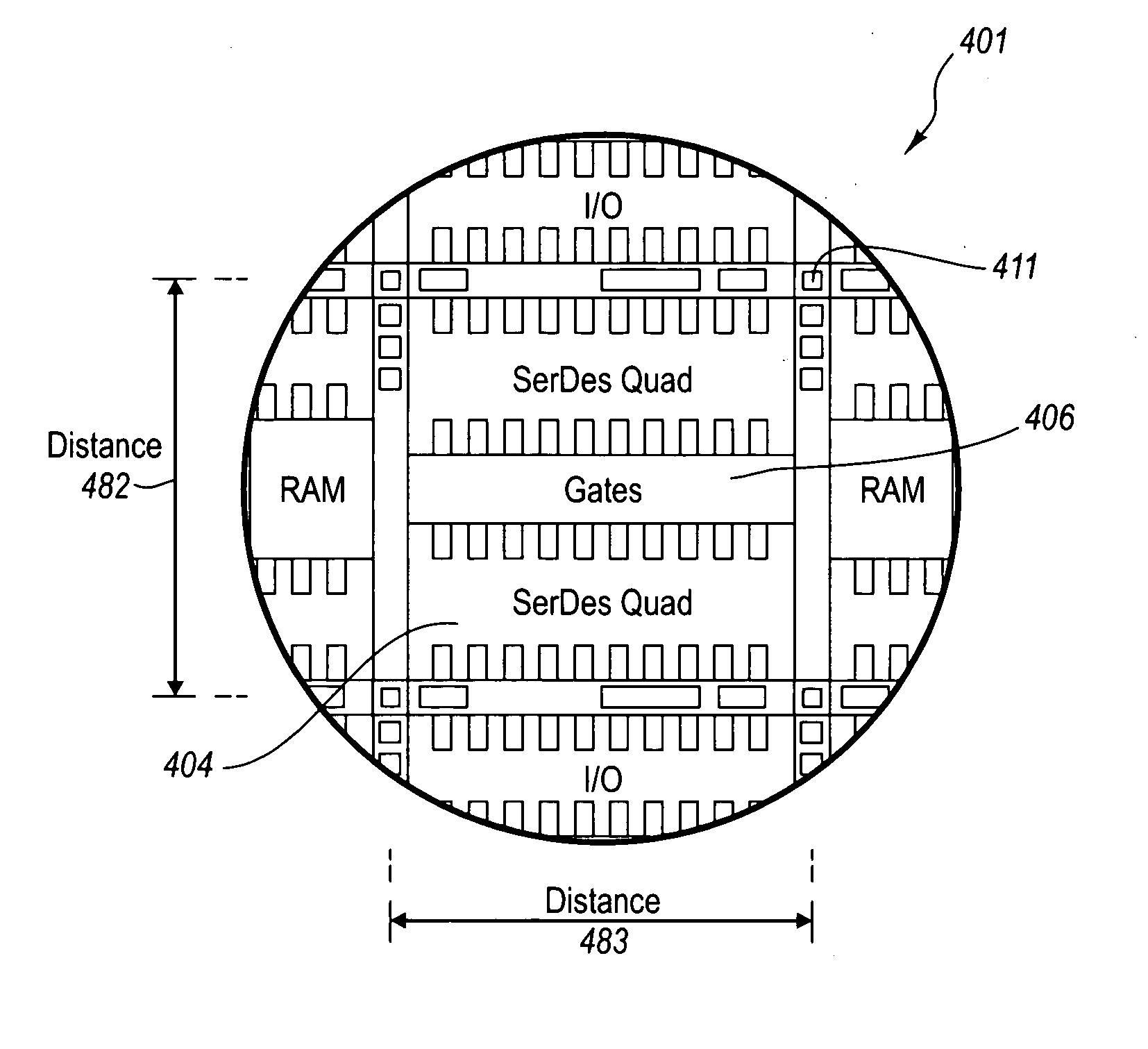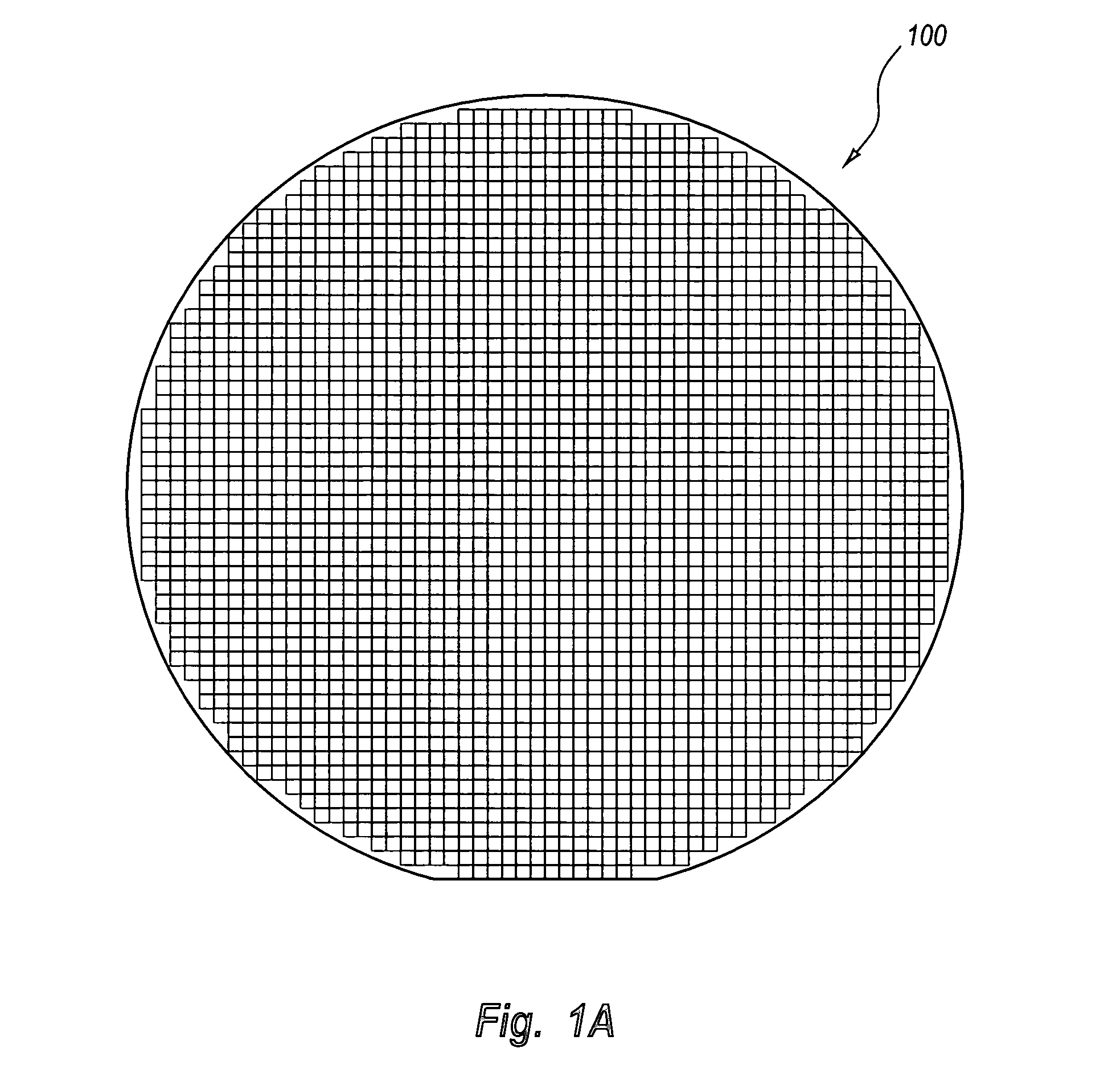However, gate arrays often lack the flexibility to support more complex functionality such as, for example, large amounts of memory,
timing generator functions and other specialized functions (e.g., processors and I / O physical interfaces).
Unfortunately, with advances in process technology, the resulting development cost of
cell-based and hand-crafted custom IC's is rising exponentially, due at least in part to the cost of photolithographic
reticle tooling.
This increased development cost essentially limits the use of
cell-based and hand-crafted custom IC's to very high-volume cost-sensitive applications.
That is, it may be difficult to implement high-complexity low-volume applications in a cost efficient manner.
One challenge in selecting the architecture of structured ASIC devices is deciding what type of and in what quantity pre-designed functional blocks should be embedded in the base.
If the appropriate IP functions are not included, the corresponding device will not be
usable for certain applications.
If too many embedded IP functions are unused in a particular application, significant
silicon area will be unused, potentially making the cost of the device too high.
However, developing multiple platforms each requiring a number of bases (e.g., 6 to 12) requires a significant financial investment.
Further, there are other tooling costs in addition to the photolithographic reticles discussed above.
Each base in a Structured (or Platform) ASIC family will require these additional types of tooling, and thus, will incur some additional corresponding cost, which can usually be distributed across multiple custom logic devices.
However, the borderless approach faces several problems.
One problem is finding an effective way to achieve isolation from the scribe line region.
Scribe lines defined in the programmable levels may provide good definition of the
cutting region but since scribe lines typically do not extend into base
layers, good isolation is difficult to achieve.
A second problem arises due to the intrinsic differences between transistors designed for use in core logic functions and those intended for use in I / O functions.
Various approaches have been used to achieve dual-use transistors, but the disparity in core and I / O
transistor requirements continues to widen, making it evermore difficult to create efficient dual-use structures.
Most borderless approaches do not
handle alignment marks and other photolithograhic and
processing artifacts very efficiently, often resulting in significant wasted
silicon real estate.
Accordingly, it may be difficult to align repeating patterns on the base with repeating patterns on programmable levels.
Many existing mechanisms avoid this alignment issue by intentionally
wasting space.
As such they are typically directed to prototyping and are typically not useful for volume production.
However, one-dimensional bordered arrays require that I / O functions are restricted to running along the two side borders.
Thus, problems with isolation in the scribe line regions in the unbordered direction and problems with repeating patterns of alignment and other manufacturing artifacts still exist.
However, these two-dimensional bordered arrays have been limited to the traditional sea-of-
transistor architecture.
However, problems related to isolating circuitry in the scribe line regions and dealing with the multitude of alignment, manufacturing and testing artifacts placed on a
wafer surrounding the individual die still exist.
These problems are particularly acute when the base die
reticle fields have a different
repeat sequence than the programmable level
reticle fields.
 Login to View More
Login to View More  Login to View More
Login to View More 


